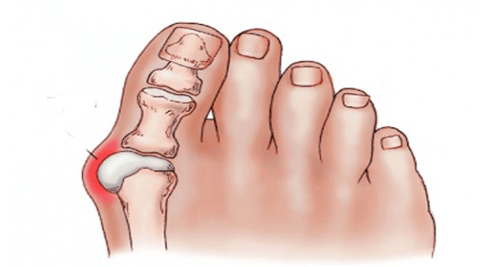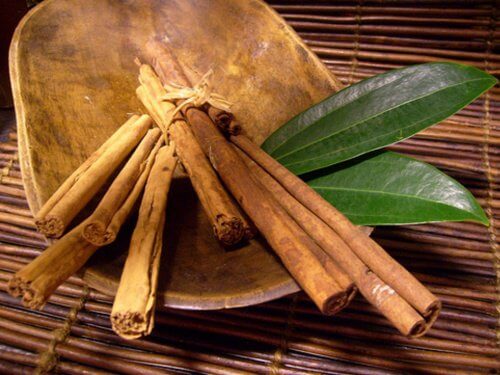Natural Home Remedies for Bunions


Reviewed and approved by the doctor Maricela Jiménez López
Aside from medical treatment, there are some home remedies for bunions that can help reduce the problems associated with them, relieve your discomfort, and keep them from reappearing. In the following article, we’ll share some of the best home remedies to get rid of bunions naturally.
A bunion is a condition that forms when the big toe joint becomes deformed, and is often associated with genetic factors or frequent and improper use of footwear. Bunions usually appear after the age of 30 and often affect both feet.
Symptoms can include: inflammation, swelling, and redness in the area, pain when walking, the formation of callouses on the surrounding skin, and more. If you notice any of these symptoms it’s best to get in touch with a podiatrist for proper treatment or cure. This is because sometimes surgery can be required.
Read also:
Lavender, a great ingredient in remedies for bunions
Lavender oil is a popular choice for treating bunions because it helps relieve pain and inflammation in the affected area. All you need to do is mix some dried lavender flowers with a little almond or olive oil. Then heat this mixture over low heat in a double boiler. Finally, strain off the lavender oil. Store this liquid in an airtight glass jar and try to remember to apply it to your bunions every night, using a gentle massaging motion.
Epsom salts
To further alleviate the irritating pain and inflammation that bunions cause, one of the most powerful and effective remedies is a foot bath using Epsom salts. Add two tablespoons of Epsom salts to a bowl of warm water and soak your feet for 20 minutes. You can use many different kinds of Epsom salts to make different remedies for bunions.
Rue
Rue is quite useful for reducing the pain and inflammation associated with rheumatic diseases like arthritis and osteoarthritis. To ease the pain of your bunions, make a foot soak using warm water with a little bit of rue. It’s like making tea – you prepare your mixture and then soak your feet in it for 15 minutes.
Lily oil
Lily flower bulbs contain an oil that’s used by various industries to make treatments that alleviate joint pain. You can buy extracted lily oil or you can make it at home using the leaves of the plant, which must be soaked in brandy for 5 minutes. Once you’re ready, use a gentle massage to apply this treatment to the affected area.
Cinnamon and bay leaf: amazing remedies for bunions

- First, make a tea from bay leaves and store it overnight. The next morning, begin drinking this mixture and continue to sip it throughout the day. Repeat this for three days in a row, then wait one week before the next three-day course, and so on.
- You can also add five finely crushed bay leaves to 100 ml of 96% rubbing alcohol. Let this sit for a week and then apply it directly to the affected area, preferably after soaking your feet in warm water.
- Massage your feet well and apply this treatment every night before bedtime, putting on socks for best results.
Iodine treatments
- One popular way to get rid of bunions is to make a mixture of iodine with a crushed aspirin. Apply this tincture directly to the bunion to stop its growth and alleviate joint pain.
- Another option for using iodine is to mix equal parts lemon juice and iodine before applying it to your bunions using a gentle massage.
Read also:
Four Surprising Uses For Aspirin You’ve Probably Never Heard Of
Other recommendations for bunions
- Try to maintain a healthy weight to avoid worsening the problem.
- Increase your intake of calcium as well as vitamins A, C, and D to strengthen the bones.
- It’s very important to wear comfortable, flexible shoes that have a wide toe box. Shoes that are too tight or heels that are very high can aggravate the problem.
- If your bunions are causing you pain, try to wear open-toed shoes to be more comfortable.
All cited sources were thoroughly reviewed by our team to ensure their quality, reliability, currency, and validity. The bibliography of this article was considered reliable and of academic or scientific accuracy.
- Koulivand, P. H., Khaleghi Ghadiri, M., & Gorji, A. (2013). Lavender and the nervous system. Evidence-Based Complementary and Alternative Medicine. https://doi.org/10.1155/2013/681304
- Waring, R. H. (2008). Report on Absorption of magnesium sulfate (Epsom salts) across the skin. Analysis. https://doi.org/accessed on 30 August 2012
- Rosen, C. J. (2014). Vitamin D supplementation: Bones of contention. The Lancet. https://doi.org/10.1016/S0140-6736(13)61721-3
- González López, J., Rodríguez Rodríguez, S., Cadena Méndez, L. (2004). Resultado funcional, estético y radiográfico del tratamiento quirúrgico del hallux valgus con cirugía mínima invasiva. Acta Ortopédica Mexicana, 18(5), 185-190
This text is provided for informational purposes only and does not replace consultation with a professional. If in doubt, consult your specialist.








